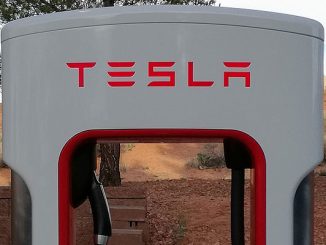
Elon Musk’s Hyperloop pusher pod keeps on setting new speed records which has been exciting people around the world.
Its latest record is 355 km/h (200 mph) and, according to Musk, he plans to exceed it by next month. His target: half the speed of sound.
His team just needs to make a few adjustments to the system, and Musk believes that his pod could achieve the goal.
How fast is the speed of sound?
Well, it depends on the temperature of the air through which the sound travels.
At sea level, with an air temperature of 15 degrees Celsius, the speed of sound is 1,225 km/h (761.2 mph).
However, when the temperature is colder, you can expect sound wave to travel slowly since gas molecules are moving slowly.
Yet, there’s a plan that’s more ambitious than what the CEO of Tesla and SpaceX is currently working on to achieve.
China intends to come up with a “flying train” that is going to be 3 times faster than the speed of sound.
China’s state-run space contractor, China Aerospace Science and Industry Corporation (CASIC), has just announced that their research has begun about their plan to come up with a high-speed train that can travel 4,000 km/h.
This high-speed train will make use of magnetic levitation and set to travel through a near-vacuum tube.
In a way, it’s similar to Hyperloop.
Hyperloop has inspired other companies since Musk envisioned the futuristic mass transit in 2013. Hyperloop One, a Los Angeles-based company, has recently tested its pod in the desert of Nevada. Using an electric propulsion system which was capable of producing more than 3,000 horsepower, the pod was able to achieve a speed record of 192 mph in approximately 5 seconds. Pumping air out of the tube through which the pod would travel was another factor that helped it attain record speed due to reduced air pressure.
Musk’s idea of the Hyperloop may indeed make a difference in the world and the transportation industry, just as Tesla’s (NASDAQ:TSLA) electric vehicles have done. His idea of transporting passengers in individual aluminum pods in above-ground tubes is certainly fantastic and appealing at the same time. Traffic problems are worsening, at the same time there’s not much land left for more highway and road expansions. The use of turbines and solar energy to power Hyperloop pods would also be more environment-friendly.
Based on Musk’s project presentation, there would be a construction of pylons spaced between 50 and 100 meters apart. On these pylons, the Hyperloop’s two tubes would be mounted. Getting inside the tubes, each of the aluminum pod would then be mounted on a pair of skis, which are made out of the same metal that is used on SpaceX (inconel). This special type of metal is known for being heat- and pressure-resistant. Through small holes in the skis, air will be pumped out to form an air cushion. Levitation is further eased up through the use of magnet and electromagnetic field.
Musk is confident that the Hyperloop will be even better than a flying car.
“We’re cautiously optimistic that it’ll be faster than the world’s fastest bullet train, even over an 8-mile stretch,” Musk said on TED.
On the other hand, according to CASIC, their Hyperloop version will be the first in the world designed for supersonic speed. Their initial goal is to hit speed of 1,000 km/h (621 mph). And once they have succeeded with the project, it will be part of China’s One Belt, One Road development strategy wherein the high-speed train would be introduced for exportation.
So the question is, who will win the Hyperloop race, Elon or China?
Well, whoever comes out on top, the only thing that really matters is that the Hyperloop may indeed be the answer and the solution to the world’s worsening traffic problems, which will become significantly worse and more widespread without major technological changes.



Leave a Reply